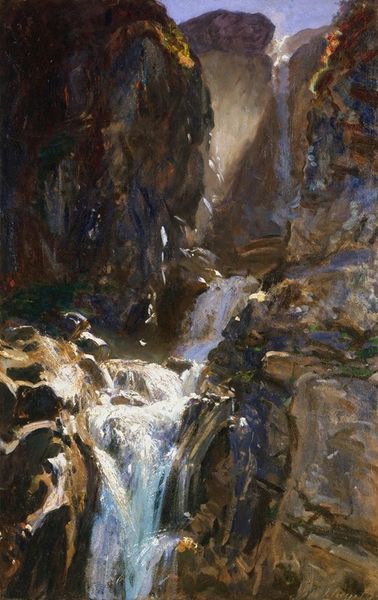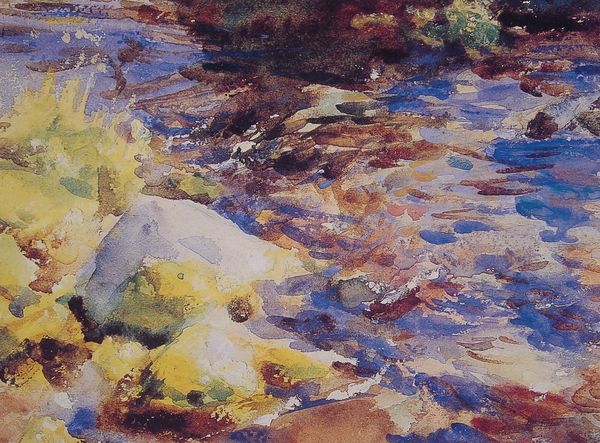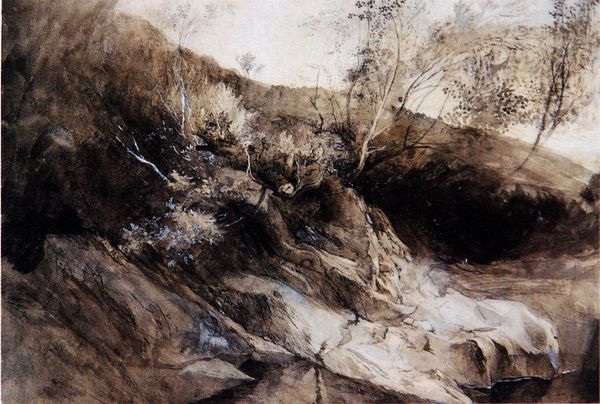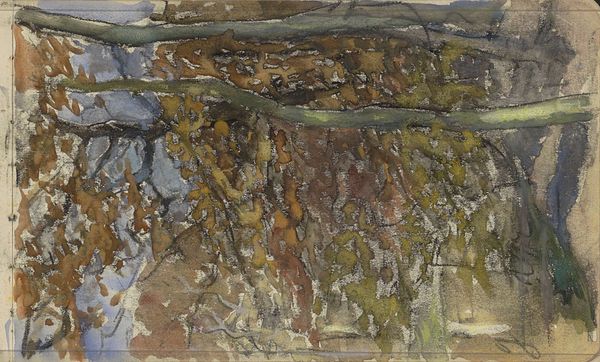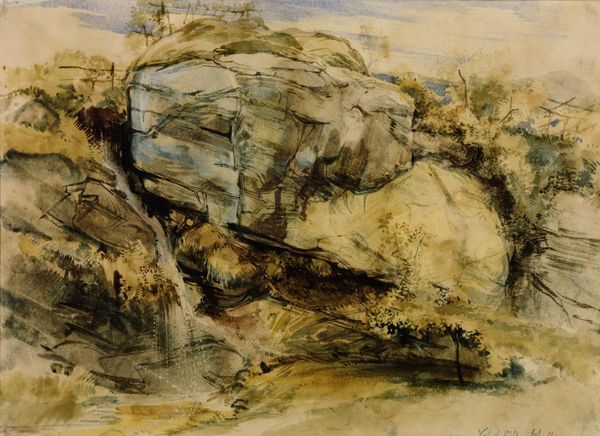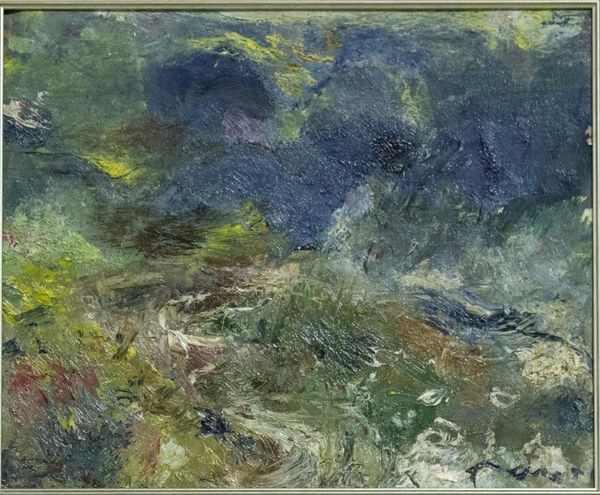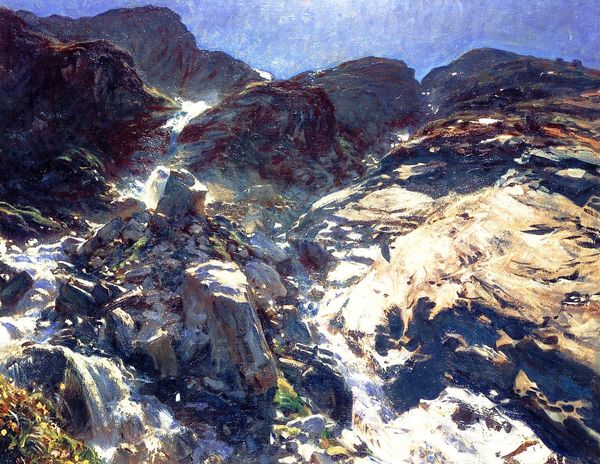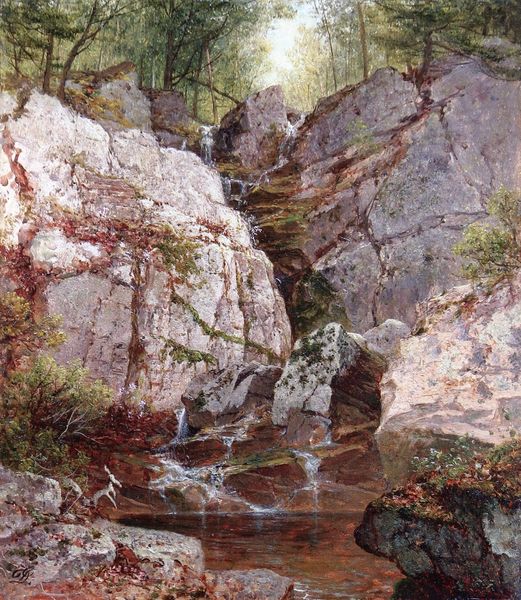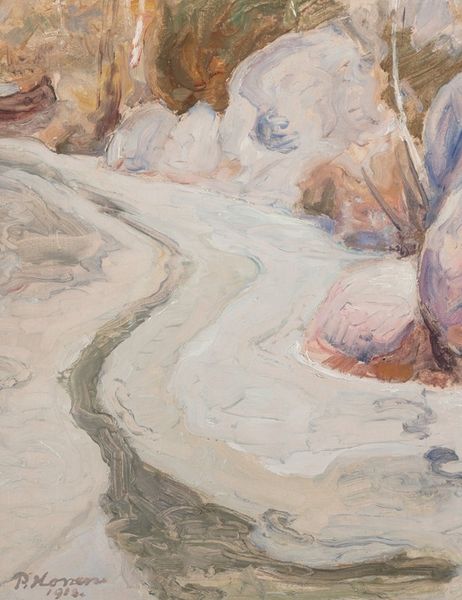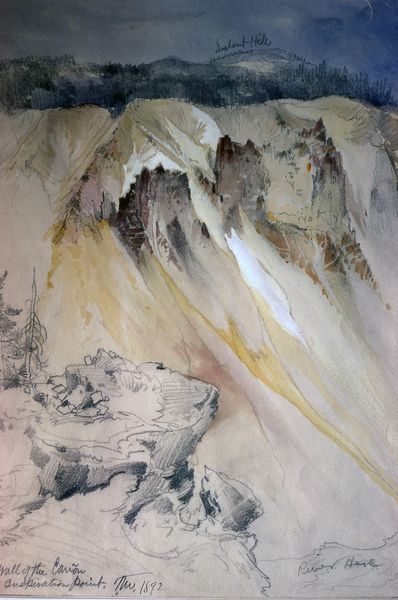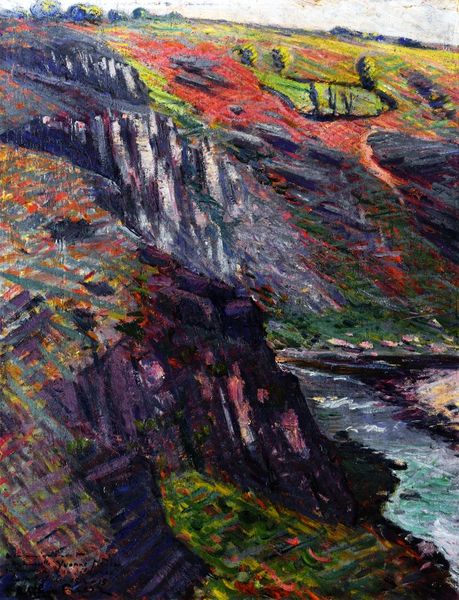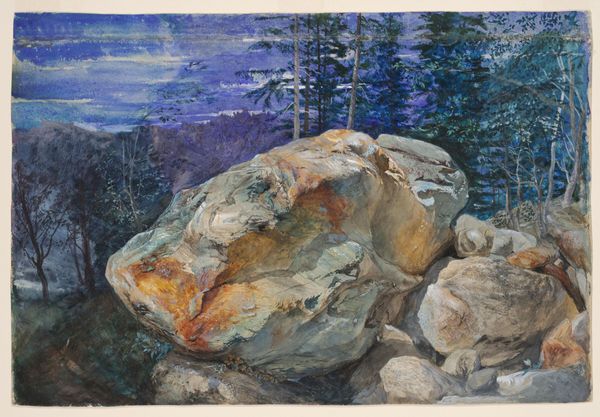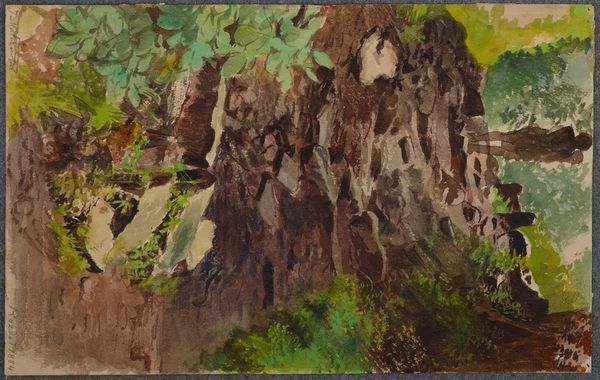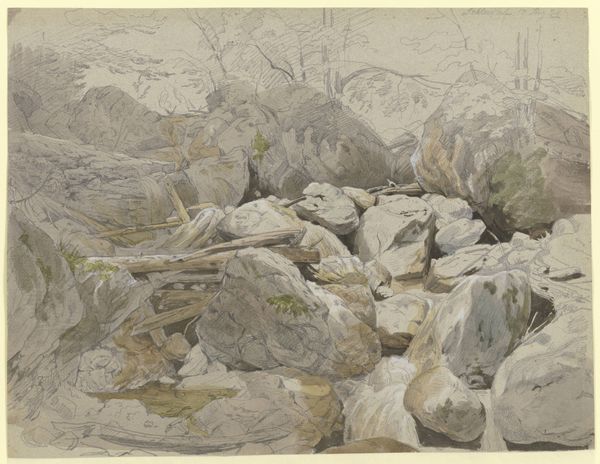
Copyright: Public domain
Curator: John Ruskin painted this evocative scene, "In the Pass of Killiecrankie," around 1857, likely using watercolors en plein-air. The way the light dances on the rocks and water creates such a strong impression. Editor: The textures of those rocks are almost tactile. There is a roughness to them that suggests a hard-won beauty, carved by the currents. I’m interested in this pass, this 'Killiecrankie'. Is this a place with historical resonance, perhaps a site of struggle? Curator: Indeed, this location is quite significant. The Pass of Killiecrankie was the site of a major Jacobite victory in 1689. But I'm more captivated by how Ruskin employed plein-air techniques to portray the landscape’s raw immediacy. Think about lugging all your equipment into the Scottish Highlands in the mid-19th century! Editor: So this location bears witness to a rebellion attempting to reinstate a Stuart king, infused by bloodshed? Landscape painting wasn't ever merely about scenery, right? There’s a romantic yearning for lost causes embedded in the picturesque appeal that this artist seems so fond of! But I agree, one can definitely feel his devotion for the geological construction of his landscape. The stratification of its rocks evokes how natural resources can be deployed as signs of nationalist or colonialist claim. Curator: Absolutely, Ruskin had a profound impact on art criticism and social thinking during the Industrial Revolution, influencing many with his views about manufacturing. Considering how he champions handmade crafts, wouldn't it be interesting to examine what he intended the role of labor, value and national identity to mean at the time? Editor: He makes me think about the current crises that indigenous people of Scotland still experience in terms of displacement and relocation. A pretty landscape painting becomes loaded with complex histories when viewed in light of identity, diaspora and cultural resistance. Curator: A watercolor of rocks takes on greater resonance thanks to this perspective. What appeared at first glance as scenic quickly transforms to encompass discussions about conflict, national character and political upheavals. Editor: Viewing Ruskin’s watercolor then asks the questions: Whose land is it, and who has the right to represent it? Curator: Thank you, a vital perspective! It enhances our awareness. Editor: The painting seems innocent at first; but that artistic 'innocence' warrants exploration.
Comments
No comments
Be the first to comment and join the conversation on the ultimate creative platform.
